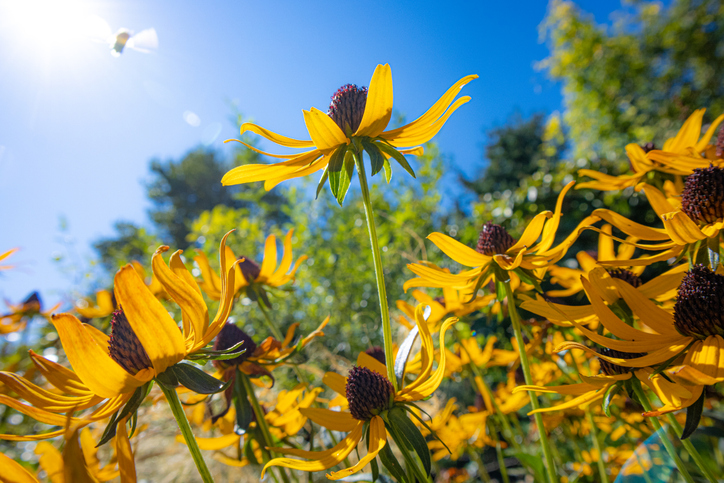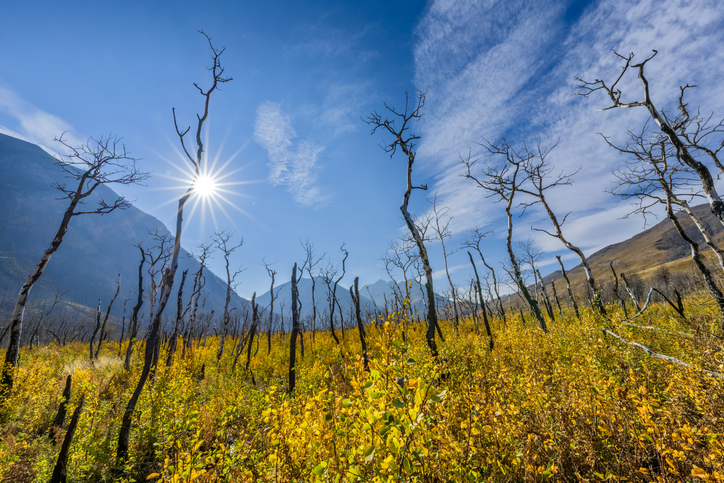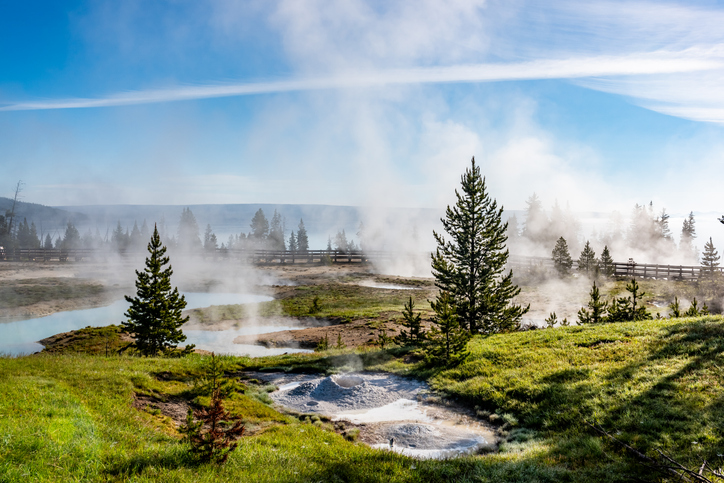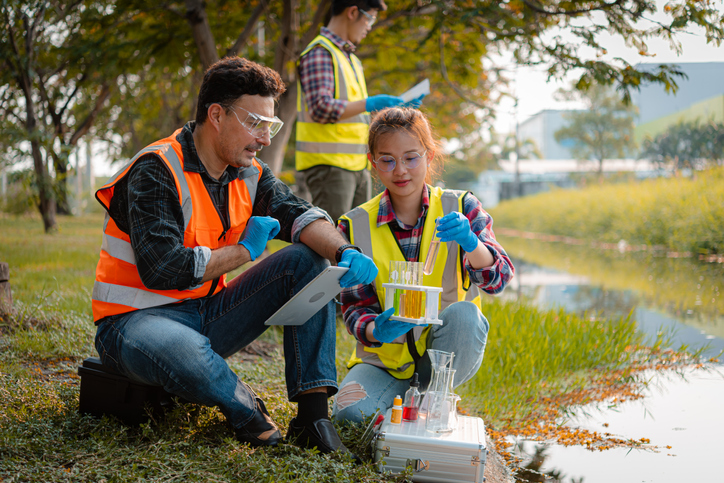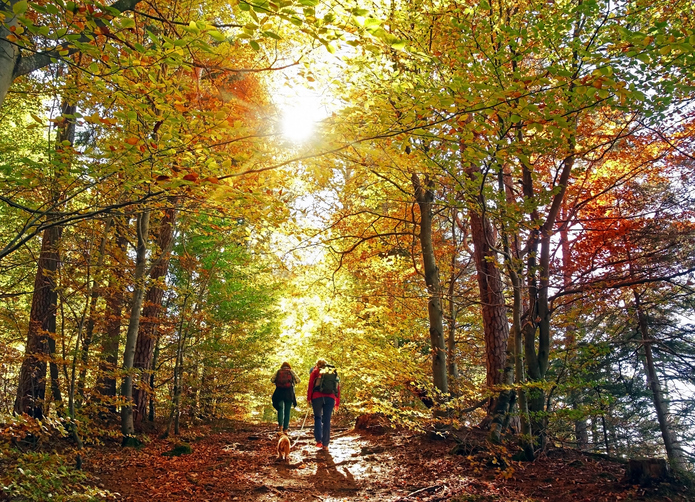Sunday, September 28, 2025
Do you enjoy getting into the garden as much as I do? The sights, smells and sounds can be intoxicating. The vibrant display of plants and florals is a visual feast. The scents of the petals and fresh earth is a natural perfume. The birdsong and buzz of bees and cicadas make for a distinctly wonderful summer soundscape.
During this season, with gardens in full bloom, it’s a prime time to appreciate our natural environments—or to contemplate how to accelerate your ecological efforts.
In his literary masterpiece called “Candide,” the philosopher Voltaire famously wrote, “We must cultivate our own gardens.” It is a powerful metaphor written by an engaged citizen who advocated for positive political change. It continues to be a call to contribute to your community and to take action on issues you care about. The phrase can also be seen as an act of resilience: by focusing on what we can control with our own actions and immediate surroundings, we can better navigate challenges—rather than being overwhelmed by external events and global crises.
For years I’ve nurtured my own gardens, perennial and vegetable, enjoying the beautiful bounty they bring to every season. Basil is a staple for us to amplify summer salads and for homemade pesto sauce. I’ve also enjoyed being involved in community gardens, especially at local schools, helping inspire students to get excited about being outside to plant outdoor learning gardens, edible planters and pollinator friendly habitats. There’s an innate enthusiasm for natural surroundings that no screen can compete with, and it’s wonderful to witness students circle back to see how their plants have grown. Teachers also use the spaces for science and math lessons, for creative writing and art projects. Over the years and throughout the seasons, I’ve witnessed thousands of students develop into environmental stewards as they learn to respect and appreciate their natural environment.
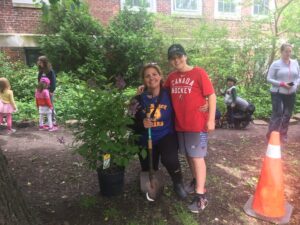
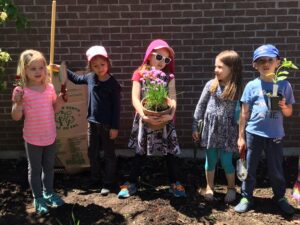
Environment Journal Editor Connie Vitello led gardening efforts at her local school, which dedicated a tree in honour of her decade of volunteering with the school garden committee and fundraising efforts for outdoor learning spaces.
Let’s look at some of the ways gardening can make an important impact in macro and micro levels of influence across the country.
Climate action in the community
Gardening can contribute to global climate action, both by mitigating climate change and adapting to its effects. Practices such as reducing water consumption, composting, and growing diverse, climate-resilient plants can reduce carbon emissions and build a more sustainable ecosystem. Gardening empowers individuals to take agency in addressing climate change locally.
Carbon emission reduction can be achieved in the following ways:
- Decrease reliance on fossil fuels by using human-powered gardening tools (like hand trowels, rakes, and wheelbarrows) instead of gas-powered equipment reduces emissions from transportation and machinery.
- Composting yard and food waste reduces methane emissions from landfills and creates nutrient-rich soil for gardens.
- Reducing food transport by growing food independently or buying locally reduces the emissions associated with transporting food long distances.
- Creating a carbon sink for carbon dioxide by nurturing healthy soil, through practices like composting and planting cover crops.
An abundance of growing options
Canada is fortunate to have a wide range of options when it comes to perennial shrubs and plants. Sustainable gardening incorporates indigenous plants can create beautiful, low-maintenance, and ecologically beneficial gardens. Focus on selecting plants native to your region, using methods like mulching, composting, and water conservation, and incorporating “edge” environments (edging materials can include plant materials, metal, or wood).

This sunflower field is located in Annapolis Valley, Nova Scotia.
The site has ideal light and soil conditions to cultivate sunflowers.
Key sustainable gardening practices can include:
- Plant selection: Choose plants native to your ecoregion, to ensure they are well-adapted to local conditions and consider pollinators and their source of nutrients throughout the seasons. Canada’s Local Gardener recently listed some of the most abundant and iconic Canadian wildflowers, including goldenrod, mayflower, and wildrye.
- Mulching: Use organic mulches like wood chips or shredded leaves to retain soil moisture, suppress weeds, and improve soil health.
- Water conservation: Minimize water usage by selecting drought-tolerant native plants, harvesting rainwater, and avoiding overwatering.
- Creating edges: Mimic natural habitats by alternating areas of taller plants with open spaces or ground cover to encourage biodiversity.
- Fall cleanup: Leave plant stalks and fallen leaves in your garden to provide overwintering habitat for insects and small animals.
- Avoid using pesticides and chemical fertilizers: Rely on natural methods like composting and companion planting to manage pests and fertilize your garden.
Resources for reinventing green spaces
The Butterflyway Project is a citizen-led movement growing highways of habitat for bees and butterflies across Canada initiated by the David Suzuki Foundation since 2017. The Butterflyway Project, and its sister L’effet Papillon in Quebec, is a volunteer-led movement brings nature home to neighbourhoods, one butterfly-friendly garden at a time. From inception to 2024, the foundation trained 1,800 Butterflyway “Rangers” in hundreds of communities throughout Canada.
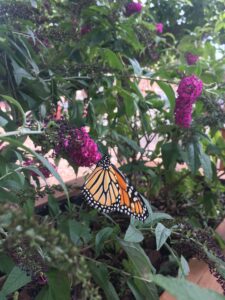
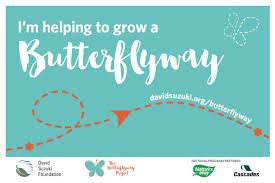
Butterflyway Rangers connect with neighbours to create habitat gardens in residential yards, school and corporate grounds, boulevards and parks. When 12 or more patches are established, a new Butterflyway is born.
Here is a summary of Ranger accomplishments so far:
- More than 116,500 native wildflowers and grasses planted
- Approximately 3,150 trees and shrubs planted
- 7,400 habitat gardens established
- 139 Butterflyways established
The Ranger role is detailed here and some inspirational stories are told in a series of videos called Butterflyway Diaries.
Another active organization in the ecological garden space is Evergreen. In 2010, the non-profit foundation transformed a collection of deteriorating heritage buildings into a global showcase for green design. Today, these buildings make up Evergreen Brick Works, Canada’s first large-scale community environmental centre located in the heart of Toronto, Ont.
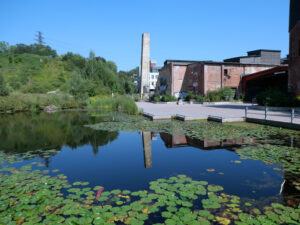
A green oasis, Evergreen Brick Works is open year-round and welcomes more than 500,000 annual visitors to experience its public markets, participate in conferences and events, enjoy outdoor learning and nature play, and explore public art.
Evergreen has become a showcase about how to incorporate regenerative practices and climate readiness into the design of public places helps them heal and grow, much like the human body after an injury. And it’s a testing ground for new ideas for better public places that can be scaled to projects and initiatives across the country. For instance, Evergreen was involved in the groundbreaking development of Canada’s first climate-ready school, the Irma Coulson Public School in Milton, Ont.
Evergreen works with community builders across sectors to solve some of the most pressing issues cities face: climate change, housing affordability, and access to nature and public spaces.
Today the organization’s efforts focus on:
- Hands in the soil: Transforming public spaces through a thoughtful process involving hard work and direct involvement. This approach provides the opportunity to test, learn, and scale ideas.
- Capacity building: Provide communities with support in terms of resource capacity and scaling. Teams use their experience and work closely with community representatives to offer guidance on the journey from vision to execution. This approach empowers communities to lead the way and create public places they need.
- Change systems: Bring together community leaders, government officials, and purpose-led organizations to create impact at a systems level. The aim is to positively work across sectors and with government to influence policy decisions that will help transform public spaces and ultimately lead to a reimagining of to design cities in Canada and beyond. This approach opens up the possibility of making an impact that benefits children and communities and lasts for generations.
An additional resource worth consulting is Nature Canada, one of the oldest national nature conservation charities in Canada. For 80 years, Nature Canada has helped protect over 110 million acres of parks and wildlife areas in Canada and countless species. Today, Nature Canada represents a network of over 130,000 members and supporters and more than 1,000 nature organizations. They provide a variety of resources, including the Screen Time Vs. Green Time Campaign that seeks to assist children maximize healthy connections to nature and minimize time spent staring at screens and practical guidance on gardening for biodiversity.
Here are four fact sheets available to help:
01 – Yard Naturalization: A ‘How-to’ Guide
Naturalization is not an all-in or nothing task: there are small changes that can be made that have a large positive impact on biodiversity.
02 – Myths & Misconceptions: Naturalized Gardens, Ticks, Mice, Rats, & Other Pests
One of the greatest misconceptions about naturalized landscapes is that they are more likely to host vermin species, compared to traditional turf grass.
03 – Bird-Friendly Gardens: Supporting Bird Habitat for Every Season
Generally, a bird-friendly garden is structured around three key components: food, water, and shelter.
04 – Good Garden Practices: Underrated Practices & Top Plant Picks
Effective gardening practices play a crucial role in cultivating a healthy garden.
I’ve recently been invited to join Nature Canada’s Women for Nature initiative and look forward to supporting future efforts. Stay tuned!
Wherever and however your garden grows, let’s spend our remaining summer days cultivating our gardens and channeling our energy into something productive, beneficial and beautiful.

Connie Vitello is Editor of Environment Journal.
Featured media credit: Getty Images

